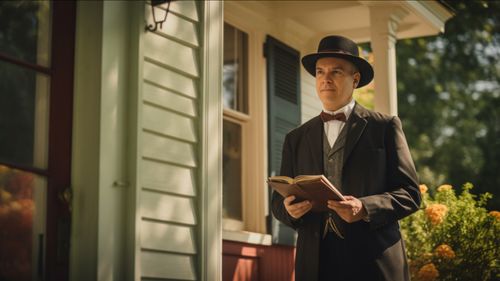'Good Country People' summary: A Journey Through Flannery O'Connor's Southern Gothic Classic
Jan 29, 2024 · 2 mins read
0
Share
"Good Country People" by Flannery O'Connor is a captivating tale that delves deep into the human psyche, challenging perceptions of identity and morality.
Save
Share
Set in the rural South, the story contrasts the simple life with complex human emotions. O'Connor masterfully paints a picture of the countryside with her distinct Southern Gothic style.
Save
Share
The story's protagonist, Joy-Hulga, a PhD with a wooden leg, embodies bitterness and pride. Her complex character is a study in self-identity and the masks people wear.
Save
Share
O'Connor's use of symbolism, especially Joy-Hulga's wooden leg, is profound. It represents her emotional detachment and vulnerability, despite her outward show of strength.
Save
Share
Enter Manley Pointer, a Bible salesman with a deceitful nature, representing the theme of betrayal. His interaction with Joy-Hulga is a dance of masks and motives.
Save
Share
The climax, where Manley steals Joy-Hulga's leg, is shocking yet symbolic. It strips her of her defenses, exposing the fragility beneath her intellectual arrogance.
Save
Share
O'Connor's dialogue is sharp, witty, and laden with irony. It's a masterclass in how spoken words can carry the weight of a character’s inner world.
Save
Share
Religion and morality are under the microscope. O'Connor, a devout Catholic, uses these themes to explore the complexity of faith and the fallibility of humans.
Save
Share
This story challenges readers to look beyond appearances, to question the concept of 'good country people', and to confront the disconcerting aspects of human nature.
Save
Share
"Good Country People" is not just a story; it's a mirror that O'Connor holds up to society, reflecting the often unsettling realities of the human condition.
Save
Share
0
